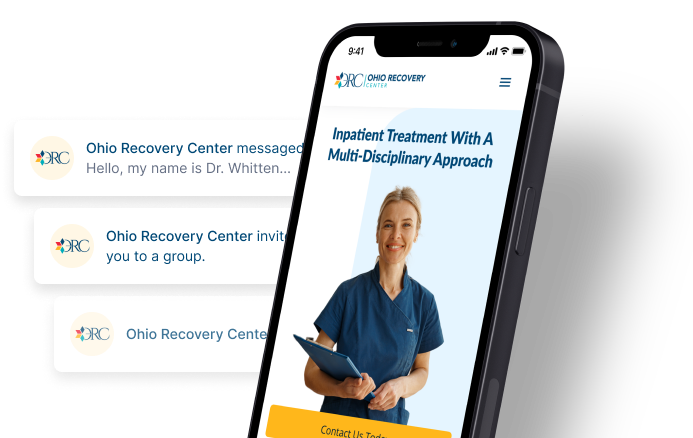Cuyahoga County, Ohio Drug Rehab & Addiction Services

Medically Reviewed By: Manish Mishra, MBBS
Cuyahoga County offers numerous drug abuse and addiction services, including a 24/7 helpline, online screenings, and various inpatient and outpatient treatment programs. The treatment programs provide evidence-based forms of care as such medical detox, medication-assisted treatment, and behavioral therapy.

Home to Cleveland, Cuyahoga County is the second most populous county in Ohio. Like many Ohio counties, it has a high rate of drug addiction (also called substance use disorder).
Fortunately, Cuyahoga offers many substance abuse and addiction treatment services, which are overseen by the Alcohol, Drug Addiction, and Mental Health Services (ADAMHS) Board of Cuyahoga County.
Residents also have access to personalized treatment programs across the state, including those at Ohio Recovery Center.
Substance Abuse Resources In Cuyahoga County, Ohio
To find substance abuse treatment in a crisis, you can contact the Cuyahoga County Suicide Prevention, Mental Health/Addiction Crisis, Information and Referral Hotline.
This 24/7 helpline is run by the ADAMHS Board of Cuyahoga County. The Board also offers an online search tool where you can look up addiction services by location, service type, provider name, or age group.
You can also find treatment using DrugHelp.Care. Developed by faculty and students at Cleveland State University, this website connects Cuyahoga County residents with treatment services, peer and family support services, and harm reduction services, including free naloxone.
Naloxone is a life-saving medication that can quickly reverse an opioid overdose.
If you’re not sure whether you or someone you love needs treatment, you can use the Board of ADAMHS’ online behavioral health screenings. These free, confidential screenings can help you determine if you or your loved one is struggling with addiction or other mental health issues.
Ohio Recovery Center
Located about 3 hours from Cuyahoga County, Ohio Recovery Center provides comprehensive inpatient care to help you or your loved one thrive.
Our board-certified healthcare providers offer a variety of evidence-based services, including medical detox, behavioral therapy, and aftercare planning.
Cuyahoga County Overdose Data
When left untreated, drug abuse and addiction can lead to a life-threatening overdose.
In 2019, Cuyahoga County ranked second in total overdose deaths compared to all other Ohio counties. Between 2015 and 2020, the county recorded 2,824 overdose deaths. About 82% of the 2020 deaths involved fentanyl.
Fentanyl is a synthetic opioid that’s up to 50 times stronger than heroin. It’s often laced in other substances, including powder drugs (such as heroin and cocaine) and pills (such as Xanax and OxyContin).
The number of fentanyl-related deaths in Cuyahoga County increased 355% between 2015 and 2016. In 2021, the county’s African American residents experienced sharp increases in overdose deaths involving fentanyl-laced cocaine.
Alcohol & Drug Rehab Options In Cuyahoga County
Currently, there are about 60 drug and alcohol rehab centers in Cuyahoga County. Most are located in Cleveland, though there are also centers in other cities, including Lakewood, North Olmsted, Euclid, Rocky River, and Brook Park.
Some of these centers offer inpatient treatment, while others offer outpatient treatment.
Inpatient Vs. Outpatient Treatment
Inpatient treatment (also called residential treatment) is often recommended for people with moderate-to-severe addictions. During inpatient treatment, you live at a rehab center and receive 24/7 care.
Outpatient treatment is recommended for people with milder addictions and supportive home environments. There are three types of outpatient programs: partial hospitalization programs (PHPs), intensive outpatient programs (IOPs), and standard outpatient programs.
PHPs are the most intensive, while standard outpatient programs are the least intensive.
When you enter an inpatient or outpatient program, a team of healthcare providers will work with you to create your personalized treatment plan. Depending on your needs, this plan may include:
Medical Detoxification
During medical detox, doctors will help you manage withdrawal symptoms as you get drugs out of your system. They may also prescribe medications to ease certain symptoms.
Behavioral Therapy
In behavioral therapy, a mental health professional will help you manage drug cravings and change unhealthy behaviors and beliefs. They can also help you cope with any underlying mental health issues that may contribute to your drug abuse.
Medication-Assisted Treatment (MAT)
In MAT, doctors will prescribe medications to ease cravings and withdrawal symptoms associated with opioid and alcohol addiction. MAT also includes behavioral therapy.
Other Treatment Services
Other evidence-based treatments include:
- group therapy
- family therapy
- peer support groups
- dual diagnosis treatment for people who struggle with drug abuse alongside other mental health concerns
- case management and aftercare planning
How To Pay For Rehab In Cuyahoga County
Most addiction treatment centers in Cuyahoga County accept private health insurance.
Many also accept Medicaid and Medicare. To determine how much coverage you will receive, contact your insurance provider.
If you don’t have insurance or are underinsured, you have other options. For example, you could:
- ask the treatment center about payment plans
- apply for a loan or grant
- use a crowdfunding site such as GoFundMe
To verify your insurance coverage or learn more about treatment, please contact Ohio Recovery Center today.
- Centers for Disease Control and Prevention — Fentanyl Facts https://www.cdc.gov/stopoverdose/fentanyl/index.html
- Cuyahoga County Board of Health — The 2021 Cuyahoga County Drug Overdose Integrated Epidemiologic Profile https://www.ccbh.net/wp-content/uploads/2022/08/2021-Cuyahoga-County-DOIEP.pdf
- Drug and Alcohol Dependence Reports — Trends in opioid overdose fatalities in Cuyahoga County, Ohio: Multi-drug mixtures, the African-American community and carfentanil https://www.sciencedirect.com/science/article/pii/S2772724622000476

